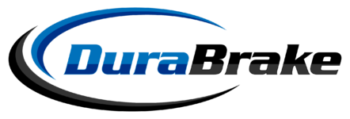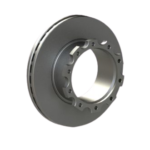In less than 3 years, air disc brakes (ADB) penetration in heavy-duty applications has grown from a range of 12 -15% to about 18-25%. This is strong growth for what’s still a relatively new option, but many of the brake makers see ADBs carving out an even larger slice of the pie in the near future, spurred by the OEMs offering disc brakes as standard. The popularity of air disc brakes has been increasing for years, as these brakes are here to stay. In the recent years, penetration of ADBs has been steadily growing partly since many truck OEMs have made air disc brakes standard equipment. International, Kenworth and Peterbilt are among the manufacturers who now offer ADBs as standard on their Class 8 models, and Freightliner Trucks recently announced that they will offer ADBs as standard on the new Cascadia. From an equipment spec’ing perspective, the difference between disc brakes and drum brakes is simple: Drum brakes cost less up front, but disc brakes provide better performance, including improved stopping distance, and lower maintenance cost. Increasing number of fleets are calculating that the trade-off is worth it, and OEMs are starting to do the same. This is a catalyst for change, which will facilitate future considerations for fleets to consider ADB on their new trailer orders. Although brake drum volume is still higher several ADB producers seem to feel air disc brake orders approaching or matching those for drum brakes within the next decade. Some industry experts believe the air disc brake market driving more than 40-50% of the overall brake market by 2025. ADB penetration is lower for trailers than tractors. Some brake manufacturers estimated that the number of trailers spec’d with ADBs is currently in the 12-15% range. However, the increased number of disc brakes on tractors is spurring more growth in the trailer market, especially from fleets spec’ing new trucks with ADBs as standard. Disc brake penetration was higher on tractors even before some of these OEMs made disc brakes the standard offering. Based on the conversion to ADB, DuraBrake is betting on more orders for disc brake trailers from fleets looking for a common platform across their fleet. With safety and cost of ownership of paramount importance, fleets are recognizing the benefits of air disc brakes. Most OEMs recognize the advantages of ADB such as shorter stopping distance, reduced Compliance, Safety, Accountability (CSA) violations, reduced maintenance cost and longer life of the brake pads.
Although air disc brake penetration is growing, this is still a relatively new technology in the US. Drum brakes are still the majority, and many fleet managers have many questions on ADB as to how the brakes fit with their fleet. One reason ADBs may be headed for accelerated growth is because brake manufacturers have begun to address some of the concerns potential customers had with ADBs. Many fleets have stayed away from ADBs due to the weight, mechanical complexity and initial purchase price. Now, many newer ADB manufacturers have focused on cutting weight, increasing market volumes and simplifying the design, which is driving down the cost. Suppliers have made significant efforts to drive down disc brake package weights over the last several years. ADBs are becoming lighter and less complex in operation to improve performance and complicated maintenance. In talking to parts managers who have not actively pursued ADB we encounter following concerns:
- Total Cost: The cost of using ADB over drums for a fleet depends on multiple factors, such as; application, drivers, maintenance, trade cycles, ADB costs, CSA scores, safety record, resistance to change etc. Unit costs of ADBs are fast decreasing as applications are increasing. Bendix has an ADB Value Calculator, available online, which allows fleets to provide inputs (i.e., ADB up-charge, maintenance costs, labor rates, etc.) that generates a report to estimate their savings (or penalty) if they choose to spec ADBs over drum brakes. Fleets need to consider their business model and evaluate the long-term potential benefits that ADB can bring to their overall fleet efficiency and safety performance. Compared to Europe, ADBs are still relatively new in the North American trailer market, and many fleets have not seen a full trailer trade cycle.
- Safety: ADB reduces stopping distances when compared to drum brakes. ADB has the potential to reduce the risk of an accident and/or its severity. Having the potential to reduce the severity of an accident or a near miss is a major consideration in ADB choice.
- Experience: Human nature in general; if it works well why change. ADB part suppliers like DuraBrake have resources at the disposal of customers who are new to ADBs. In fact, one of the key advantages of ADBs is that they require less maintenance than their drum brake counterparts as disc brakes are built with fewer components, maintenance is simpler and takes less time. Reduced maintenance does not mean decreased service intervals for brake friction. Performing regular inspections for integral ADB components like brake pads and calipers can significantly impact system life and performance.
Well maintained ADB program will cut down on brake costs by avoiding CSA citations. Brakes are the second-most penalized component of the truck, after lighting, and it can lead to unnecessary delays and downtime for fleets. DuraBrake has successfully guided many customers with their product strategy to stock selective rotor part numbers and inventory levels based on their market reach. Contact DuraBrake’s marketing group to consult on your entry needs for serving and marketing rotors in the aftermarket.



